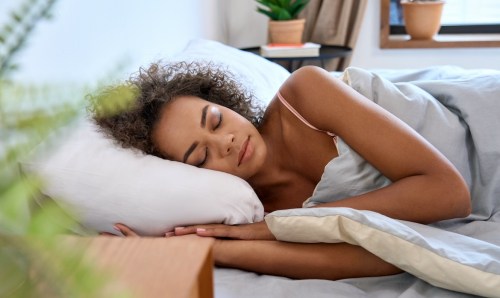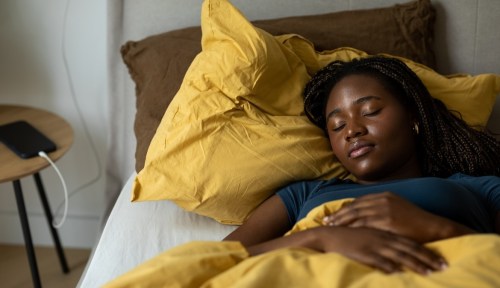We’re just days away from one of the most bittersweet moments of the year. On Sunday, March 14, the clocks spring ahead, marking the start of daylight saving time. Instantly gaining an hour of daylight in the evening (yay!) means we’ll also lose an hour of sleep. To get your body ready for the switch, Lauren Hale, PhD, vice chair of the board for the National Sleep Foundation, says you should start training now.
Experts in This Article
vice chair of the Board for the National Sleep Foundation and a professor at Stony Brook University
“It’s hard to abruptly change your sleep schedule by one hour a night,” says Dr. Hale, who is also a professor in the program of public health at Stony Brook University. “The body functions optimally when it has a regular bedtime and wake time, across the entire week from Sunday to Sunday. It’s better to try to ease into it,” says Dr. Hale. In the nights leading up to the switch, slowly begin to shift your bedtime.
When you don’t take the time to ease into the switch, it can have a huge impact on how you’ll feel in the days after. Unlike the end of daylight saving time in November, it’s much harder to get to bed earlier than it is to push yourself to stay up an hour later.
“Your body needs to adjust slowly, because your body’s got a circadian rhythm,” says Dr. Hale. “As a population, you don’t see this as an individual level, because it’s hard to capture rare events at the individual level, but at the population level, you see increases in heart [attacks], increase in stroke, increase in suicides, increase in car accidents, reduced productivity. You see all of these effects in the few days or the week after the transition to daylight saving.” Instances of these issues may be reduced this year, she says, given the volume of people who are now working from home and don’t have to rise as early for their commute.
Prepare for daylight saving time with a sleep expert’s tips for gradually shifting your bedtime
The best way to prepare for daylight saving time is to shift your bedtime by 10 minutes or so over the course of six days “You want to start adjusting your nighttime earlier so that you can still get sufficient sleep in the week preceding without it being a surprise to your body when you have to wake up early for work or school on Monday morning,” says Dr. Hale.
It’s important to focus on your bedtime more than your wake-up time—if you’re going to bed at the same time but just waking up earlier, you’ll likely be tired. Instead, going to bed earlier means you’ll get enough sleep in the day ahead. Maybe you’ll also wake up earlier, but if you’re sleep-deprived, getting some extra sleep and decreasing your sleep debt can also do you some good ahead of the switch.
Going to bed a few minutes early is easier said than done. Especially if you’re not one who falls asleep within minutes of getting into bed. Below, Dr. Hale shares three tips to get your body ready for sleep earlier to help gradually shift your sleep-wake schedule.
1. Get early morning light
Lighting has a huge impact on signaling to your circadian rhythms that it’s time to get going. As soon as you wake up, open the blinds and, if you can, head outside for a walk.
“If you start in the morning with early morning light, get outside and exercise,” says Dr. Hale, “that light really tells your body that it’s time to wake up. Then you’ll be tired earlier in the evening.”
2. Don’t eat too close to bedtime
If you’re still digesting when you’re trying to fall asleep, your body may be too busy to relax enough for you to sleep. “Eating three hours before bedtime is better than one hour before bedtime, for sure,” says Dr. Hale.
3. Avoid light exposure before bed
“You don’t want a lot of exposure to light in the hours proceeding bedtime,” says Dr. Hale. “That means [light] from your electronic devices but that also means from all the lights in your house. You want to be dimming the lights and queuing your body that bedtime is near, not that your body should be alert.”
Interested in investing in a better night’s sleep? Learn about different sleep tech in this video:
Oh hi! You look like someone who loves free workouts, discounts for cult-fave wellness brands, and exclusive Well+Good content. Sign up for Well+, our online community of wellness insiders, and unlock your rewards instantly.
Sign Up for Our Daily Newsletter
Get all the latest in wellness, trends, food, fitness, beauty, and more delivered right to your inbox.
Got it, you've been added to our email list.











